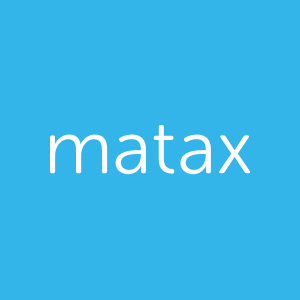Our Take: Priority Based Budgeting vs. Value Based Budgeting
As you grow your business, deciding the best methodology for budgeting can be key to seeing the results you’re after. It’s not just about going through the motions and checking off line items, it’s about the strategy and intention behind your actions. But what kind of budget is best for you? MATAX is here to break down the two most popular methods, priority based budgeting and value based budgeting, to help you decide.
What Is Priority Based Budgeting?
Do you have those frustrating vampire charges in your personal finances? This is like that time you signed up for a free trial of an app—which you really did need at that moment—but it is now hitting your account for $29.99 every month because you forgot all about it. If you build up enough of these, they’ll eat away your ability to afford that trip you really want to take or that expensive gift you’ve been wanting to give. What does this have to do with budgeting for business?
Those budgetary vampires exist in our business plans as well, and they take a few different forms. Sometimes they’re tiny, just like our personal vampires: an app here, a recurring service there. Other times they’re larger and more pervasive: an initiative that crosses multiple departments but is only half-fulfilled, a technology investment that seemed helpful but turned out to be more hype than it was worth. Either way, many budgetary processes can overlook these expenses, letting the vampires continue to drain your accounts.
Priority based budgeting is a strategy that attempts to weed out budgetary vampires. This methodology means each budget year starts with a clean slate. The budget starts down at zero. No vampire apps, no vampire projects, no vampire expenses. This clean slate allows businesses to identify the most important factors for their growth and make room for those expenses and investments first, before any work of assessing more ancillary and wish-list items. This process enables budget-makers to be more intentional about individual line items, giving them more control over the direction that business is growing.
What Is Value Based Budgeting?
Rather than starting with a clean slate, value based budgeting begins with the values of the year previous. Thus, this approach is like copying and pasting the year before and then making adjustments as needed. While this approach to budgeting may seem easier on the surface, and it’s certainly common, it is also more likely to result in slower growth and less efficiency in budgeting. Meticulous budgetary oversight may result in streamlining the numbers from the previous year, but the odds of catching and removing every single case of vampires, unnecessary expenses, and duplication of efforts is pretty low. The cost of the simplicity of creating a value based budget lies in its inefficiency, and businesses will pay it year-round.
Moving Forward with Priority Based Budgeting
If you’re looking to make the switch from value based budgeting to priority based budgeting but not sure where to start, we understand; it’s not exactly easy. Creating this kind of budget takes more effort because you aren’t coasting off last years’ numbers and hoping they work out. The end result, however, is a budget that is more tailored to meet the needs and expand the growth of your business without leaking funds elsewhere. Of course, if you don’t personally have the time or energy to go through this kind of budgetary process, it’s a lot easier when you work with professionals like us at MATAX.
Until then, to ensure you’re on the right track, make use of the best practices for profitability as well as the first steps for budgeting we’ve listed below.
Start with Your Income
Your budget should always start with your income. You should have an accurate estimate of what your total income is each month, as well as any expected changes in that income due to sales, investments, etc. Having an accurate idea of your income will help you plan out the rest of your budget more effectively.
Set Financial Goals
Once you have established your income, it's important to set financial goals for yourself. What do you want to achieve with this budget? Are there any debts that need to be paid off? Do you want to save money for a rainy day fund? It's important to set goals so that you can stay motivated and track your progress.
Understand Your Cash Flow
Monitoring cash flow is key to creating an effective budget plan that allows businesses to allocate funds in the most efficient way. Keeping detailed records of all expenses and income can help business owners track their budgets and keep an eye on their finances; this ensures that there are enough funds available to cover costs without draining resources. And, by having accurate records at their disposal during tax season, businesses can minimize tax preparation time and ensure that they don't miss out on any potentially beneficial deductions.
Talk to an Expert
For business owners who are seeking to create an effective budget plan, speaking with a financial expert could be the best way forward. Experts like us understand the ebb and flow of the economy and know how to craft a budget specific to individual needs.
Explore Priority Based Budgeting with MATAX
Our team has helped several businesses create budgets and plan for the fiscal year, and we’re here to help you too. We also handle ongoing bookkeeping and accounting, cash flow monitoring and forecasting, cost reporting, and audit support. If that sounds like the kind of help you need, schedule a free consultation with us today.

